By Emily Hamer
As winter break begins, many students have Christmas on the brain. But students who are Jewish, Muslim, Buddhist, Hindu, or other faiths don’t have that same experience.
In fact, many religions’ major holidays don’t fall during winter break. And even though UW–Madison’s campus is made up of students from a variety of religions, few know about holidays of other faiths.
Pictured above: Hundreds of students participate in the spirited Hindu tradition of throwing colored powder during Rang de Madison, a Holi festival of color hosted by the Madison Hindu Students Association outside of Dejope Residence Hall at the University of Wisconsin–Madison on April 15, 2017. The event was held in collaboration with UW–Madison’s India Students Association and Indian Graduate Students Association. PHOTO by JEFF MILLER
History professor Charles Cohen says to make campus — and society in general — more inclusive and accepting, it’s important for everyone to recognize other people’s religious holidays, and understand their meanings. During the month of December, Cohen, who is Jewish, urges non-Christians to recognize that this is a time of celebration for Christian students and to share that joy with them if they can.
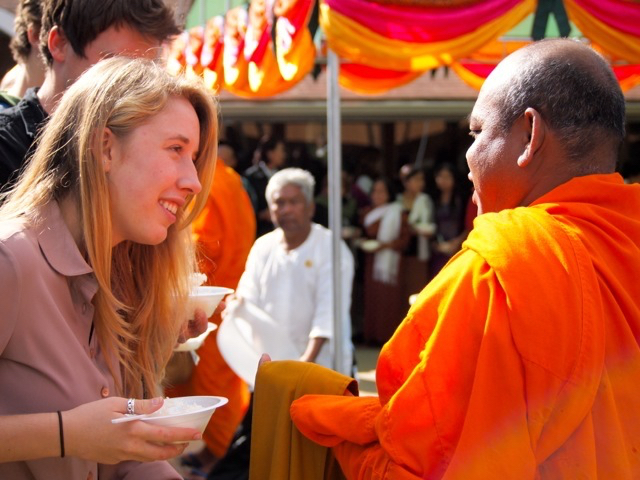
UW students attend a Buddhist New Year celebration at the Cambodian temple in Fitchburg. COURTESY OF EMILY CONKLIN
“Explaining your own beliefs and celebrations, and inviting people to take part however they can, is an important component of American civic life,” Cohen says. “In doing so I think we are … participating in the great American experiment in which we value our own religions and we value religious freedom — meaning other people’s right to believe what they want to believe.”
If you don’t know students of different faiths, it can be challenging to start a dialogue or learn about other students’ traditions. In many settings, religion is something we avoid talking about.
If you aren’t able to talk to someone else about their festive times, or if you want a place to learn some basic knowledge about different religious holidays before talking about your friends’ religious beliefs, this article is for you.
Here are some of the major holidays of several other faiths and when they occur next year. Also, hear from students about their favorite religious memories. Since we can’t cover every holiday in a single article, we’ll only include those celebrated in Judaism, Islam, Hinduism and Buddhism, but please explore other holidays as well, such as Kwanzaa or the Chinese New Year.
Judaism
Some major Jewish holidays and their approximate dates in 2017 and 2018 (The Jewish calendar is lunisolar, and holidays move within about a thirty-day range against the standard international calendar)
– Hanukkah, Dec. 12-20, 2017
– Passover, end of March 30 – April 7, 2018
– Shavuot, May 19-21, 2018
– Rosh Hashana, Sept. 9-11, 2018
– Yom Kippur, Sept. 18-19, 2018
– Sukkot, Sept. 23-30, 2018
Although Hanukkah receives more popular attention than do other Jewish holidays, it is not a very important religious holiday to Jews, Cohen says. Since Hanukkah happens to fall around Christmas, it often gets elevated in the eyes of non-Jews.
“It’s entirely appropriate for a non-Jew to wish a Jew ‘Happy Hanukkah,’” Cohen says. “Just know that, for a Jew, that’s not the functional equivalent of ‘Merry Christmas,’ at least in terms of the importance of the holiday,” Cohen says. “But as a gesture of friendliness, sure, why not?”
Hanukkah is not in the Torah, but it celebrates the re-sanctifying of the ancient Temple in Jerusalem by Jewish warriors, Cohen says. According to legend, the warriors had enough sanctified oil to burn for one day, but it burned for eight — which is why Hanukkah is eight days and includes candle lighting.
In student Eva Bernstein’s family, they light candles and play Dreidel. During Hannukah, Jews traditionally eat fried foods like jelly donuts and potato pancakes (latkes) to commemorate the miracle of the oil. The Bernsteins enjoy the unique family tradition of deep-frying a different food each of the eight nights.
The most important Jewish holidays are Rosh Hashana (the Jewish New Year), Yom Kippur (the Day of Atonement) and the three pilgrimage festivals, all of which were celebrated in biblical Israel, Cohen says. The pilgrimage festivals are Pesach (Passover), Shavuot (Weeks or Pentecost), and Sukkot (Feast of Tabernacles, or the Feast of Booths).
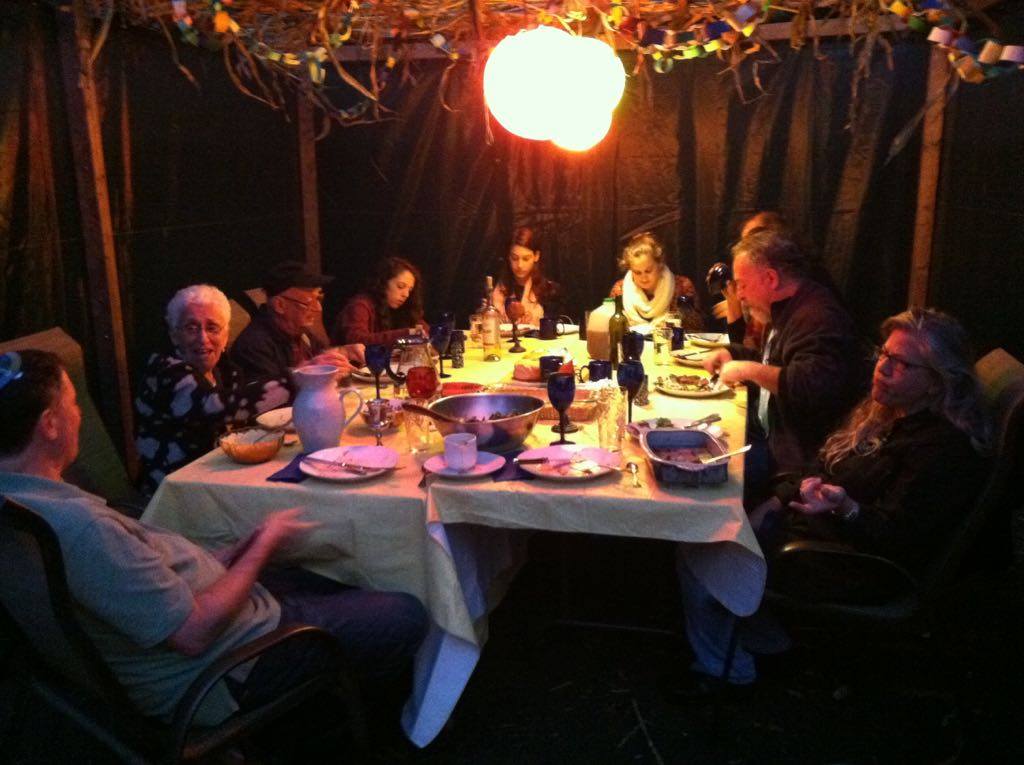
Eva Bernstein and her family eat dinner in the hut that they build outside to celebrate Sukkot. COURTESY OF EVA BERNSTEIN
On Passover, Jews hold a seder, a ritual feast to celebrate the liberation of the Jewish people from slavery in Egypt during the time of Moses. Bernstein says there are a variety of steps you do from retelling the story to saying prayers over wine.
“It’s essentially like a banquet, kind of,” Bernstein says. “We’re all sitting around the table. We’re all singing songs. It’s very family-oriented.”
Bernstein’s favorite holiday is Sukkot, even though it’s not as well known to non-Jews. The holiday commemorates the days Jewish people spent in the desert on their way to the promised land.
“We build huts in our backyard, and we eat and sleep in them,” Bernstein says. “It’s like the harvest festival, and I’ve always really liked that one. It’s just really about being outside and it’s like a very fall-like festival.”
Islam
Some major Islamic holidays and their approximate dates in 2018 (The Islamic calendar is lunar, so holidays shift against the standard international calendar in a 33-year cycle and are subject to change based on the phase of the moon)
– Ramadan (month of fasting and repentance), May 15 – June 14, 2018
– Eid Al-Fitr (celebration at the end of Ramadan), mid-June 2018
– The Hajj (pilgrimage to Mecca), late Aug. 19-24, 2018
– Eid Al-Adha (celebration at the end of the Hajj), late Aug. 20-21, 2018
– Al-Hijra / 1 Muharram (the Islamic New Year), Sept. 11-12, 2018
– Mawlid al-Nabi, the Prophet’s Birthday, Nov. 20-21, 2018
First-year student Agalia Ardyasa says she doesn’t think many non-Muslims know about or understand Muslim holidays. But she hopes more people will start to understand.
Two of the biggest holidays in the Islamic faith are Ramadan and Eid Al-Fitr, Cohen says. Ramadan is a holiday that lasts the entire month — it’s a month of daily fasting. Many Muslims observe the last 10 days with special piety, which may include an all-night prayer vigil.
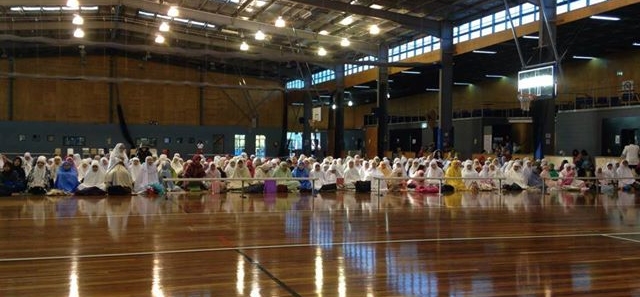
During Eid Al-Fitr, Muslims start the day off by praying. COURTESY OF AGALIA ARDYASA
Ardyasa says fasting is one of the five pillars of Islam. According to the Quran, fasting is required for being a mature and healthy Muslim. Fasting itself aims to increase individual’s compassion and empathy to those in need, give an opportunity to get closer to God, and promote body health.
“The main point is it’s kind of like a detox for your body for the whole year,” Ardyasa says. “It’s a year of cleaning everything in your body.”
Eid Al-Fitr is the festival that breaks the fast. It’s a time of rejoicing since the fast is over, Cohen says.
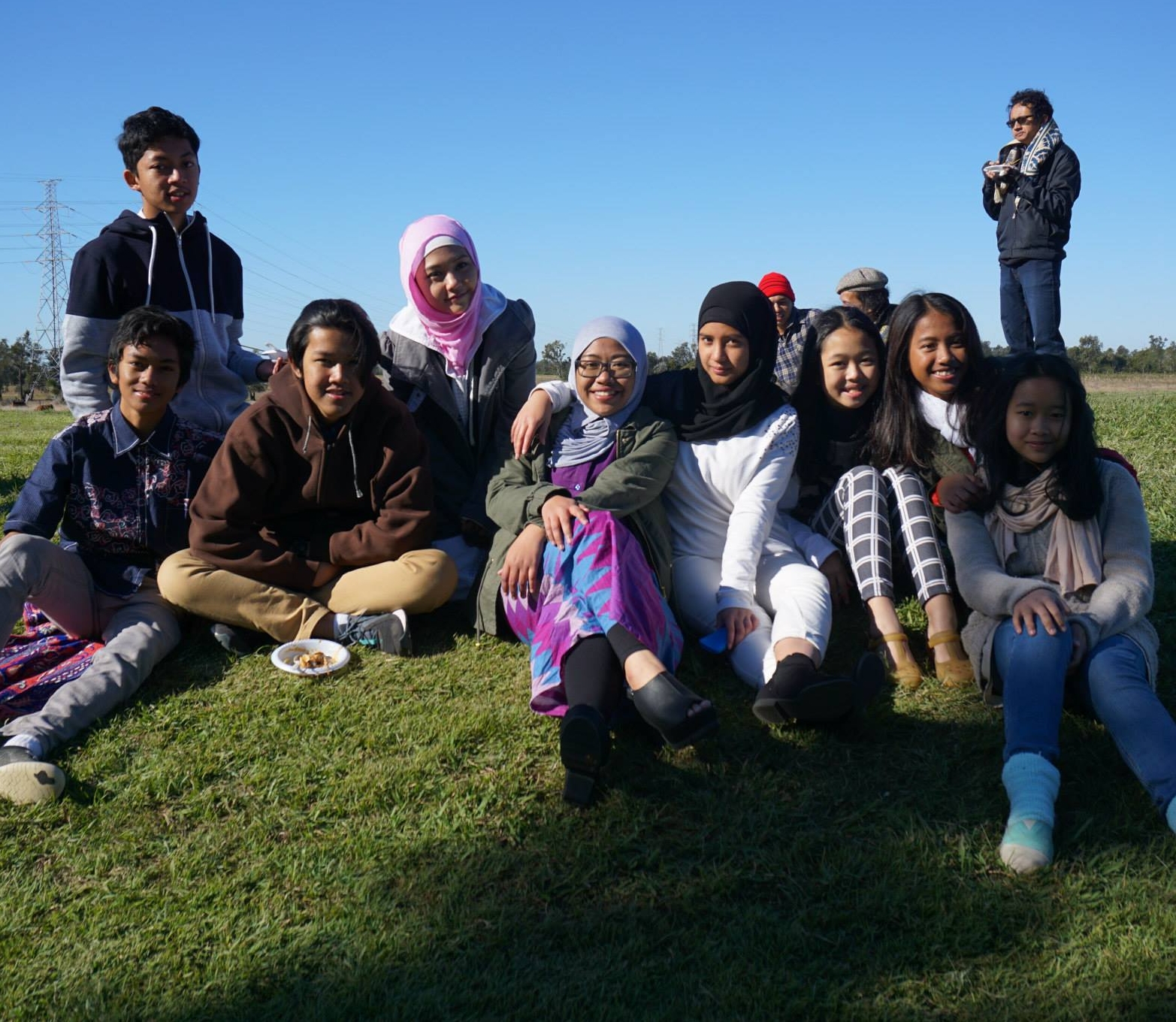
After the morning of prayer, Muslims celebrate Eid Al-Fitr with a feast and spending time with family. COURTESY OF AGALIA ARDYASA
Ardyasa says Eid Al Fitr is her favorite Muslim holiday. People start the day by praying, then go home to their families and have a giant feast. Ardyasa says it’s a lot like Thanksgiving. Since she’s from Indonesia, they primarily eat Indonesian food at the feast.
“[Eid Al Fitr] is like the biggest Muslim holiday ever,” Ardyasa says. “I basically think it should actually be a [nationally recognized] holiday. … For me it’s one of the most meaningful Islamic events ever.”
Another important event on the Islamic calendar is the Hajj, or the pilgrimage to Mecca. It is required for Muslims to make the pilgrimage at least once in their lifetime, and more than two million Muslims make the trip every year.
Concurrent with the Hajj is Eid Al-Adha, the festival of sacrifice. Cohen says it’s customary to sacrifice a sheep or goat in memory of Abraham’s willingness to obey God’s will by sacrificing his son. Having witnessed Abraham’s faithfulness, God provided a ram to sacrifice instead.
Hinduism
Some major holidays and when they will occur next year (subject to change based on the phase of the moon because Hinduism follows the lunar calendar)
– Maha Shivratri, Feb. 13, 2018
– Holi, March 3, 2018
– Raksha Bandhan 2018, Aug. 26, 2018
– Krishna Janmashtami, near Sept. 2, 2018
– Ganesha Chaturthi, Sept. 12-23, 2018
– Navratri, Oct. 10-19, 2018
– Dussehra, Oct. 19, 2018
– Diwali, Nov. 7, 2018.
The list above is a very slim list considering how many Hindu holidays there are. Junior Sooraj Dash says there’s a holiday for almost every day of the year.
“The thing with Hinduism is that there’s so many holidays,” Dash says. “There’s so many of them.”
In addition, there is a lot of variation within the Hindu religion in terms of who celebrates what. Dash says that each part of India does things a little differently. He says this is true of both religious practices and holidays celebrated.
“First of all Hinduism technically isn’t seen as a religion; it’s seen as a way of life,” Dash says. “There’s no codified structure or commandments, no ‘this is what you have to do to be a Hindu.’”
Still, there are some major commonalities across all subsets of Hinduism. One of Dash’s favorite holidays — which is practiced similarly across all of Hinduism — is Holi, the festival of colors. Holi marks the arrival of spring and celebrates the destruction of evil and the triumph of good.
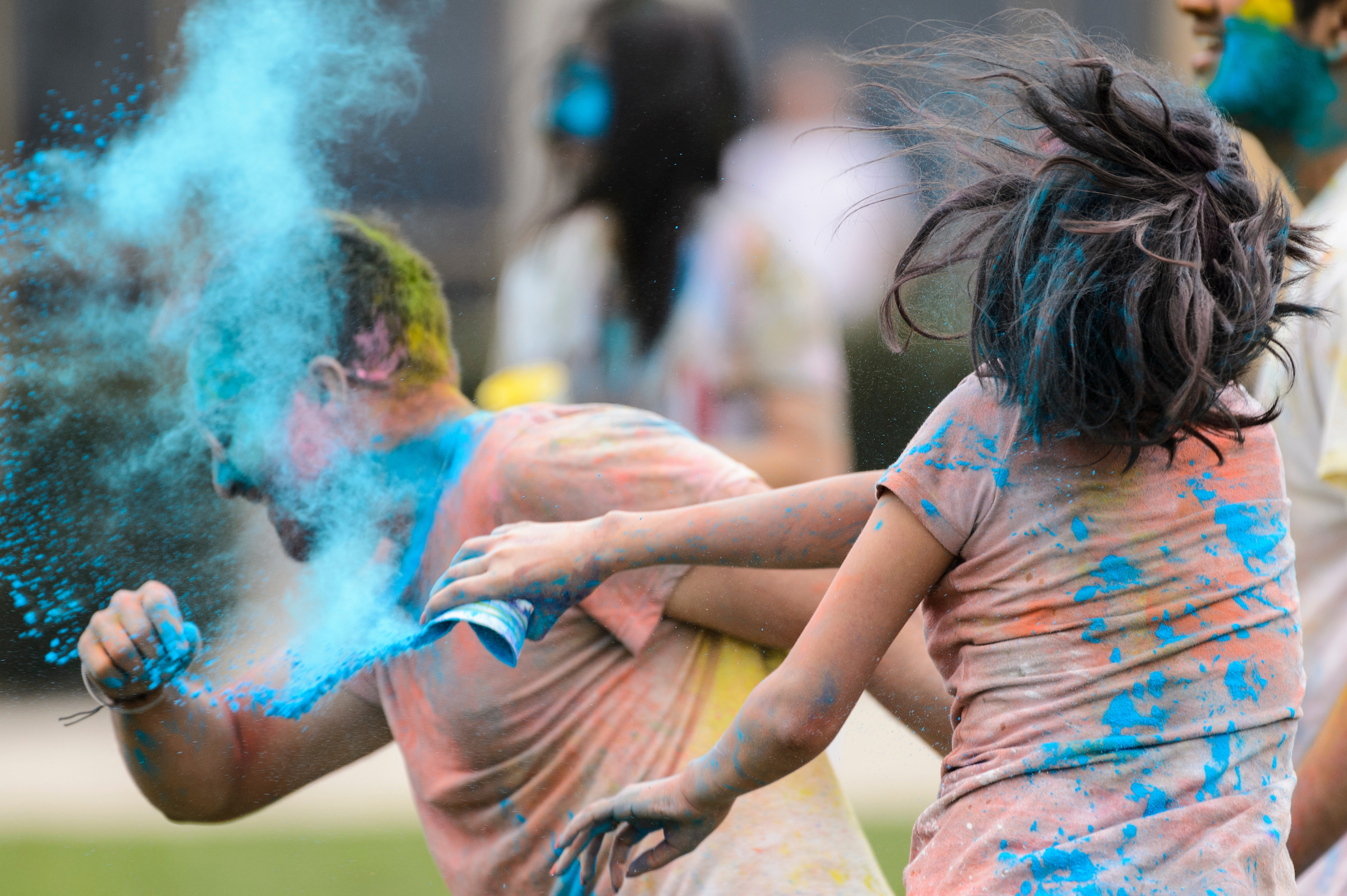
Holi celebrates the arrival of spring and victory of good over evil. PHOTO: JEFF MILLER
For the holiday, Hindus get together in a large place near the start of springtime and throw colored powder at each other. Dash says it’s like a “giant color run.” The goal is to throw colors at each other and make the place colorful.
Another major holiday in Hinduism is Diwali, commonly known as the Festival of Lights. The Hindu holiday celebrates the return of the Hindu Lord Rama after 14 years of exile in which he fought and won against the demon Ravana.
Hindus today celebrate with food, gifts, sweets, family, drawing flowers with pastel and chalk, and lights, says student Nihal Voruganti. The lights are meant to symbolize the triumph of good over evil.
“The most fun part is a lot of people — in India at least — they do sparklers and firecrackers and it’s just a lot of celebration,” Voruganti says. “It’s really fun.”
Some of the other major Hindu holidays include Maha Shivratri, Ganesh Chaturthi, and Navratri, Dash says. On Maha Shivratri, Hindus celebrate the god Shiva by meditating, praying, doing yoga, fasting, and listening to the legends and songs of shiva. Ganesh Chaturthi celebrates the birth of Ganesha, the son of Shiva. People make or buy statues of Ganesh to celebrate his legends. Navratri, also known as Nine Nights, celebrates the powerful warrior goddess Durga. The last day is Dusshera, making the holiday collectively 10 days.
Buddhism
Some major Buddhist holidays and their approximate dates in 2018
– Buddhist New Year, (date varies depending on school of Buddhism) Mahayana New Year, Jan. 2-4, 2018; Lunar New Year, Feb. 16, 2018; Theravadin New Year, April 30, 2018
– Vesak (“Buddha Day”), near April 14, 2018
Similar to Hinduism, there is also a lot of variation across the Buddhist religion in terms of holidays and traditions. History professor Anne Hansen, who focuses on research in Buddhism, says there are lots of different Buddhist traditions and how and when they’re celebrated depends on where you are geographically and what school of Buddhism you are a part of.
“You can have a holiday that’s important in one culture that’s not necessarily important in another Buddhist culture,” Hansen says.
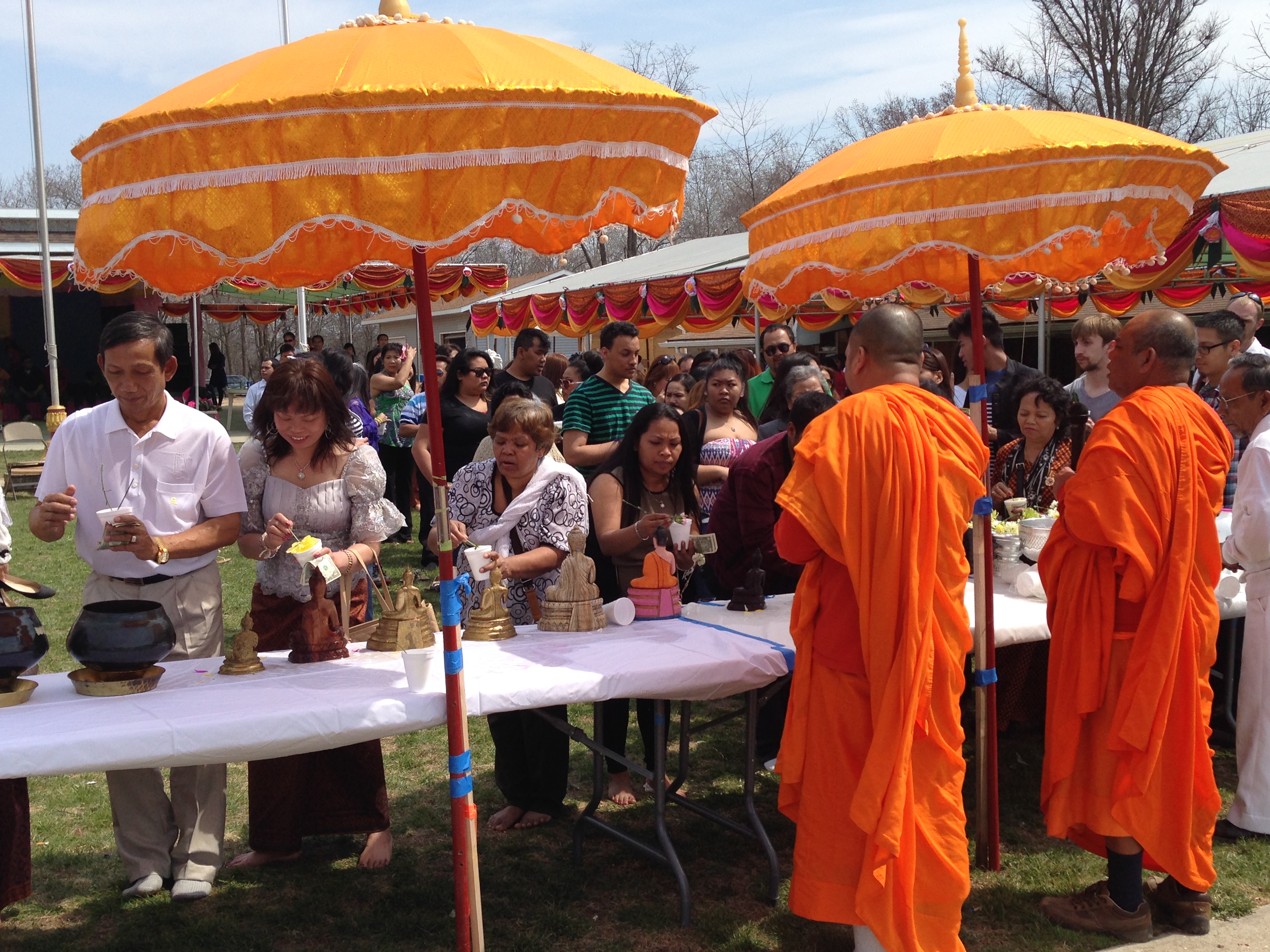
One common Buddhist tradition is to wash Buddha statues with water in order to bless Buddha. COURTESY OF EMILY CONKLIN
Still, there are some traditions that almost all Buddhists celebrate, regardless of where they are in the world. Vesak, also known as “Buddha Day,” is the most universally celebrated holiday in Buddhism, Hansen says. It celebrates the birth, enlightenment and death day of the Buddha.
One tradition that occurs in the Cambodian practice is bathing the Buddha in perfumed sacred holy water to bless Buddha. Another tradition is young people in the temple communities will ask the elders for forgiveness of wrongdoing and future blessings.
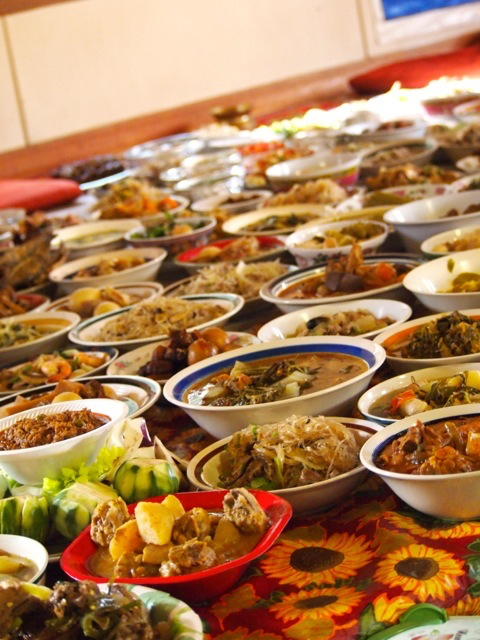
During the Buddhist New Year, Buddhists create gifts of food to offer to the monks. The monks then bless the food and grant merit to whoever offered it to them. COURTESY OF EMILY CONKLIN
Another important Buddhist holiday is the Buddhist New Year. Depending on where you are it is celebrated at different times of the year and in different ways.
In Madison, many Cambodian-American Buddhist students go to the Cambodian temple in Fitchburg to celebrate. This temple is a part of the Theravadin school of Buddhism, whose New Year usually lands sometime in the spring. Hansen often takes her students there on field trips to celebrate.
One part of the New Year tradition is to create “merit-making” gifts of food that are offered to the monks. Merit is essential a type of spiritual currency that symbolizes benefit and good deeds. When the monks eat the food gifts, they are essentially blessing it and generating merit. At the temple in Fitchburg, the monks often have around 500 dishes in front of them and have to take a single bite of each one in order to bless it, Hansen says.
After the food is offered to the monks whatever is left is used to form a giant potluck. Everyone eats all of the different dishes that have now been blessed by the monks. Hansen says UW students love taking part in the different traditions.
“Students love going out to the temple, and monks are always thrilled when UW students go,” Hansen says. “Sometimes I take a whole school bus of students out there to the festivals because they’re a lot of fun.”